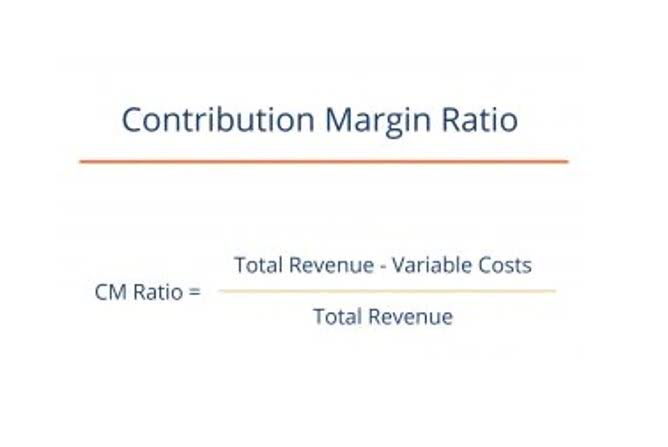
Your working capital cycle is the amount of time it takes for you to convert your net working capital amount into cash. This can be found by taking the time in between when you working capital ratio meaning have to pay your short-term debts and when you will receive outstanding accounts receivables. There are several useful metrics that can help a company avoid these pitfalls.

Working Capital Ratio Formula
- Unlike working capital, it uses different accounts in its calculation and reports the relationship as a percentage rather than a dollar amount.
- Conceptually, working capital represents the financial resources necessary to meet day-to-day obligations and maintain the operational cycle of a company (i.e. reinvestment activity).
- Figuring out a good working capital ratio and then keeping an eye on your company’s cash flow can help you understand when a shortfall lies ahead so you can take the necessary steps to maintain liquidity.
- The more working capital a company has, the less likely it is to take on debt to fund the growth of its business.
- In contrast, capital-intensive companies that manufacture heavy equipment and machinery usually can’t raise cash quickly, as they sell their products on a long-term payment basis.
- Working capital can only be expensed immediately as one-time costs to match the revenue they help generate in the period.
Current liabilities are best paid with current assets like cash, cash equivalents, and marketable securities because these assets can be converted into cash much quicker than fixed assets. The faster the assets can be converted into cash, the more likely the company will have the cash in time to pay its debts. The cash flow from operating activities section aims to identify the cash impact of all assets and liabilities tied to operations, not solely current assets and liabilities. The formula to calculate the working capital ratio divides a company’s current assets by its current liabilities.
- Stakeholders and investors check the company’s inventory to determine if it is viable enough for investment.
- If a company has a current ratio of less than 1.0, this means that short-term debts and bills exceed current assets, which could be a signal that the company’s finances may be in danger in the short run.
- To put it simply, a higher working capital ratio is an ideal situation to have as compared to a lower one.
- If they can’t sell fast enough, cash won’t be available immediately during tough financial times, so having adequate working capital is essential.
- Account payables refers to one aspect of working capital management that companies can take advantage of that they often have greater control over.
Related AccountingTools Courses
The ratio is used by lenders and creditors when deciding whether to extend credit to a borrower. Working capital is the amount of money your business https://www.bookstime.com/ needs to conduct its short-term operations. The working capital ratio is calculated by subtracting current liabilities from current assets.

How to increase working capital?
The benefit of neglecting inventory and other non-current assets is that liquidating inventory may not be simple or desirable, so the quick ratio ignores those as a source of short-term liquidity. One common financial ratio used to measure working capital is the current ratio, a metric designed to provide a measure of a company’s liquidity risk. Note, only the operating current assets and operating current liabilities are highlighted in the screenshot, which we’ll soon elaborate on. The amount of working capital needed varies by industry, company size, and risk profile. Industries with longer production cycles require higher working capital due to slower inventory turnover. Alternatively, bigger retail companies interacting with numerous customers daily, can generate short-term funds quickly and often need lower working capital.
Is working capital ratio same as current ratio?
This type of financing does not provide physical cash to you, however, it gets you the goods you would have spent a loan on. Receiving trade credit or vendor credit can make all the difference in your cash flow. Your business can be flourishing and your working capital positive and then all of a sudden you start to face a cash flow crisis. Suddenly your working capital declines and without adequate working capital, you cannot operate your business efficiently or even expand it. These discounts may seem small but they can save you some money which can help you handle your pressing expenses and debts. The money you save from getting good deals and discounts from suppliers will help grow your working capital.
Your company should produce inventory at the level of market demand, especially if you produce perishable items to cut down on current liabilities. Improving the way you manage your inventory can help lower your working capital needs. It consists of items that you have prepared for sales, used in production, and held for sale.

The cash conversion cycle provides important information on how quickly, on average, a company turns over inventory and converts inventory into paid receivables. Working capital is the term used to describe the available money that a business has on hand in order to support all activities and operations happening in the short term. Unlike long-term investments such as fixed assets and R&D, having enough working capital is the key to running a business smoothly. As just noted, a working capital ratio of less than 1.0 is an indicator of liquidity problems, while a ratio higher than 2.0 indicates good liquidity. A low ratio can be triggered by difficult competitive conditions, poor management, or excessive bad debts.

Generally, the higher the ratio, the better an indicator of a company’s ability to pay short-term liabilities. In financial accounting, working capital is a specific subset of balance sheet items and is calculated by subtracting current liabilities from current assets. If a company cannot meet its financial obligations, then it is in danger of bankruptcy, no matter how rosy its prospects for future growth may be. However, the working capital ratio is not a truly accurate indication of a company’s liquidity position.
- Working capital refers to the difference between a company’s current assets and current liabilities.
- As it so happens, most current assets and liabilities are related to operating activities (inventory, accounts receivable, accounts payable, accrued expenses, etc.).
- Its current liabilities are USD $350,000, consisting of bills and short-term debts.
- Working capital ratio is by definition, a measure of the liquidity of a business that gives it the ability to meet all its payment obligations as they fall due.
- An example of this would be an online software company where customers download the product after purchase.
- Generally speaking, a ratio of less than 1 can indicate future liquidity problems, while a ratio between 1.2 and 2 is considered ideal.
- Regularly paying your taxes can help you secure tax incentives such as reduced taxes, tax breaks, and favorable settlements in tax negotiations.
